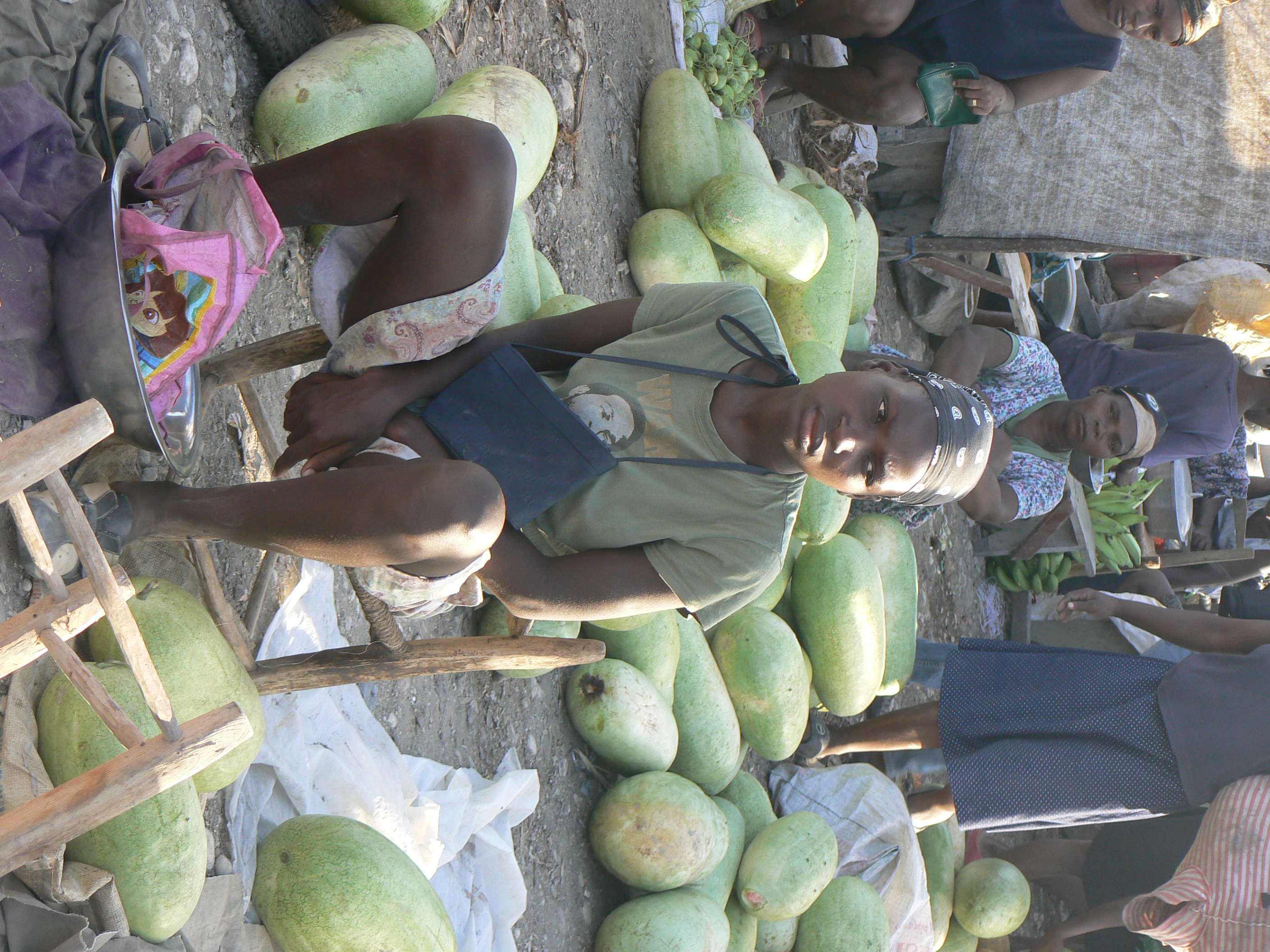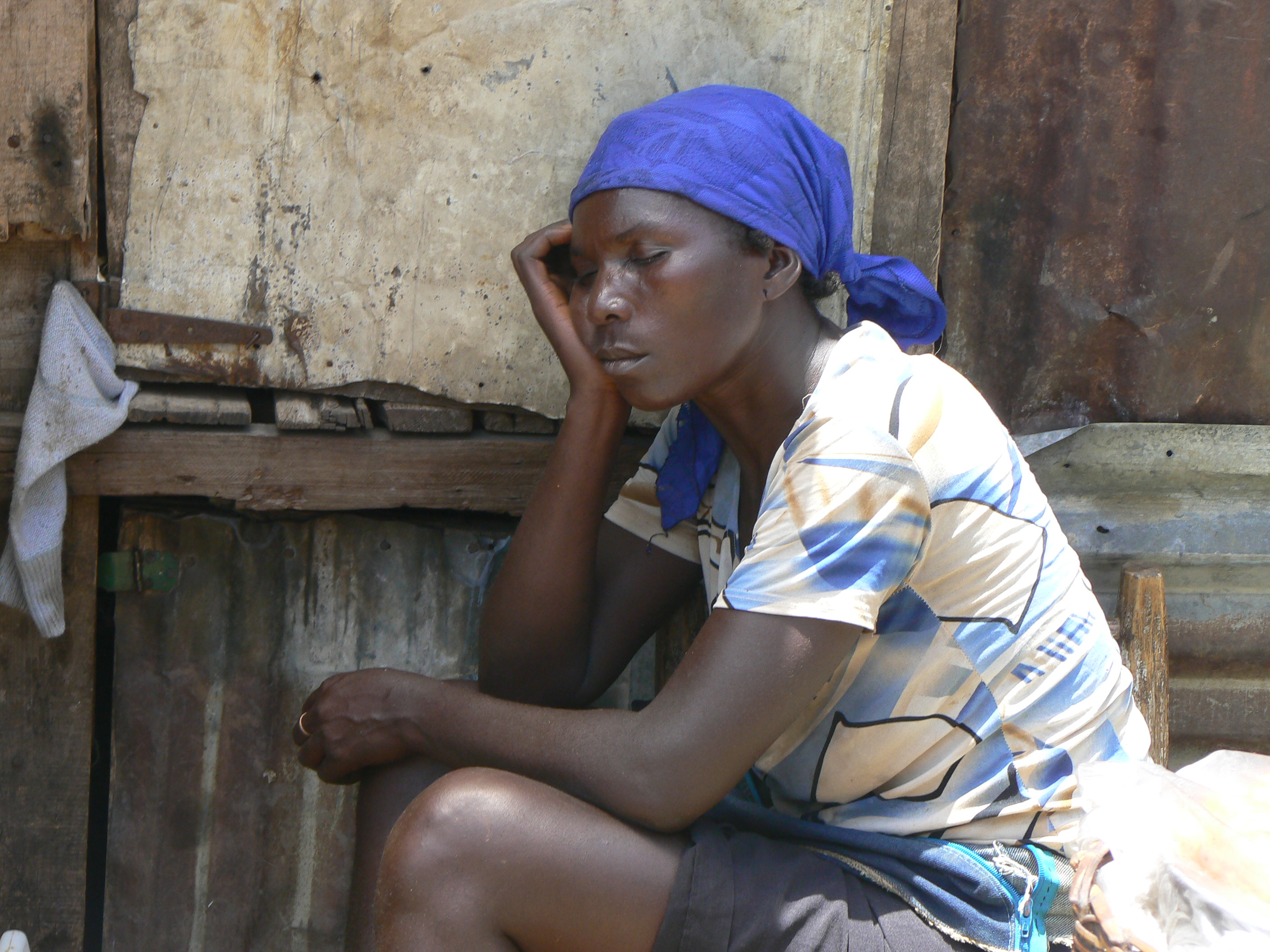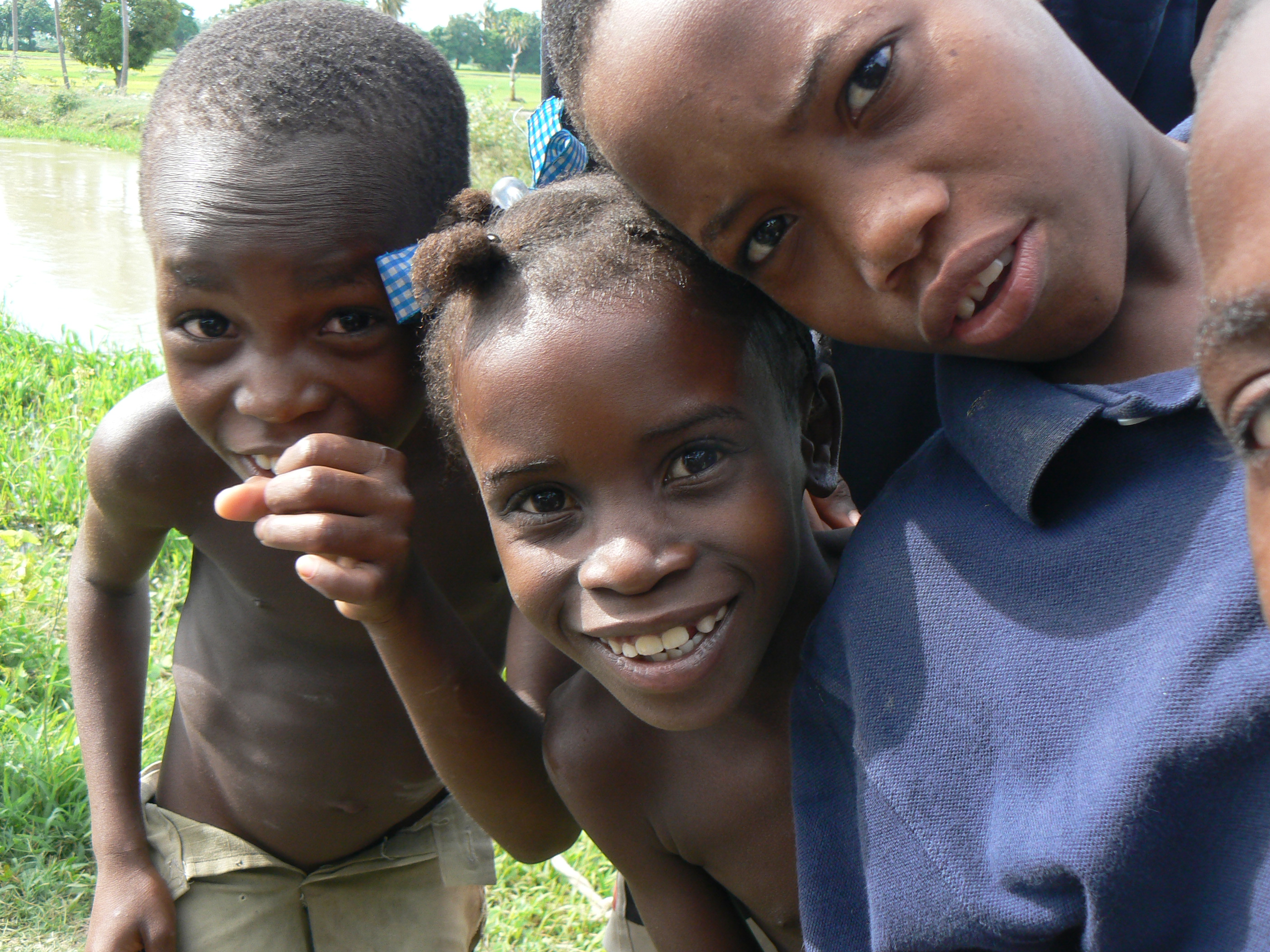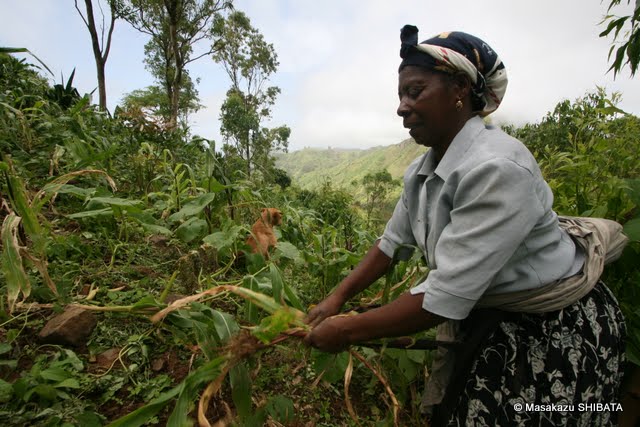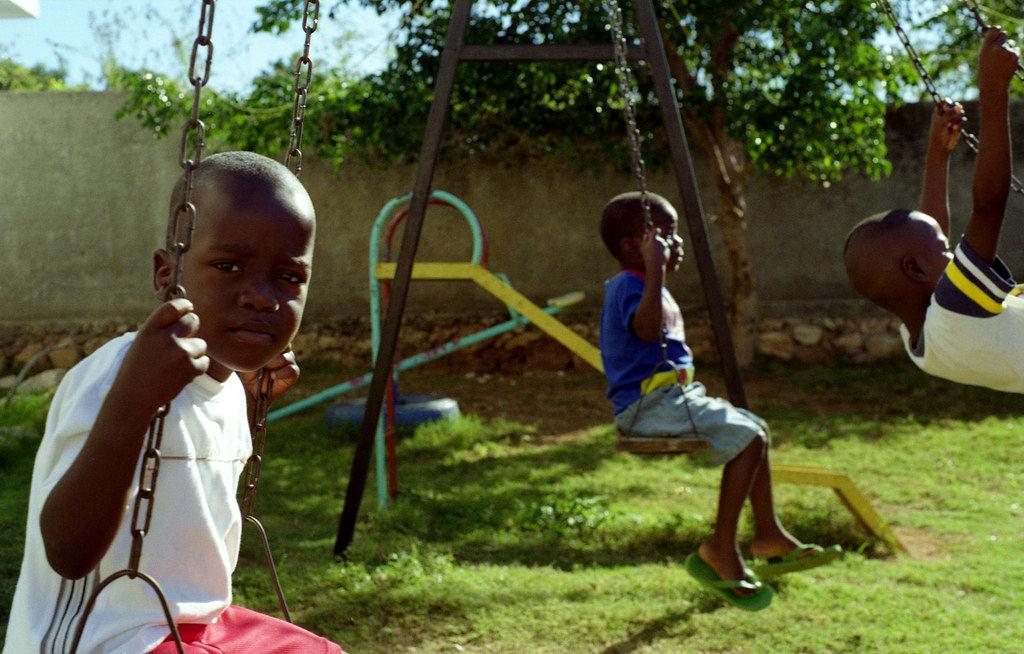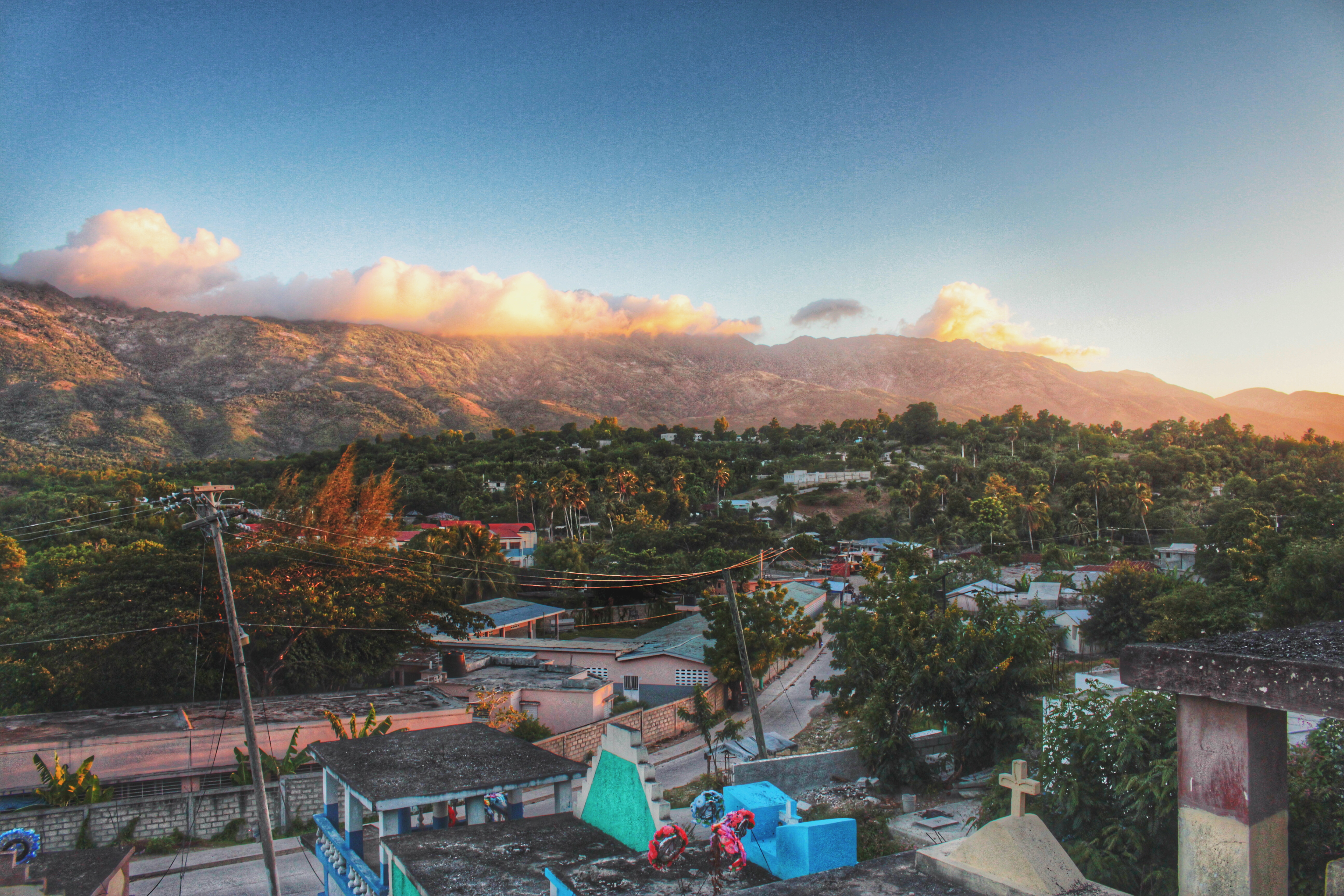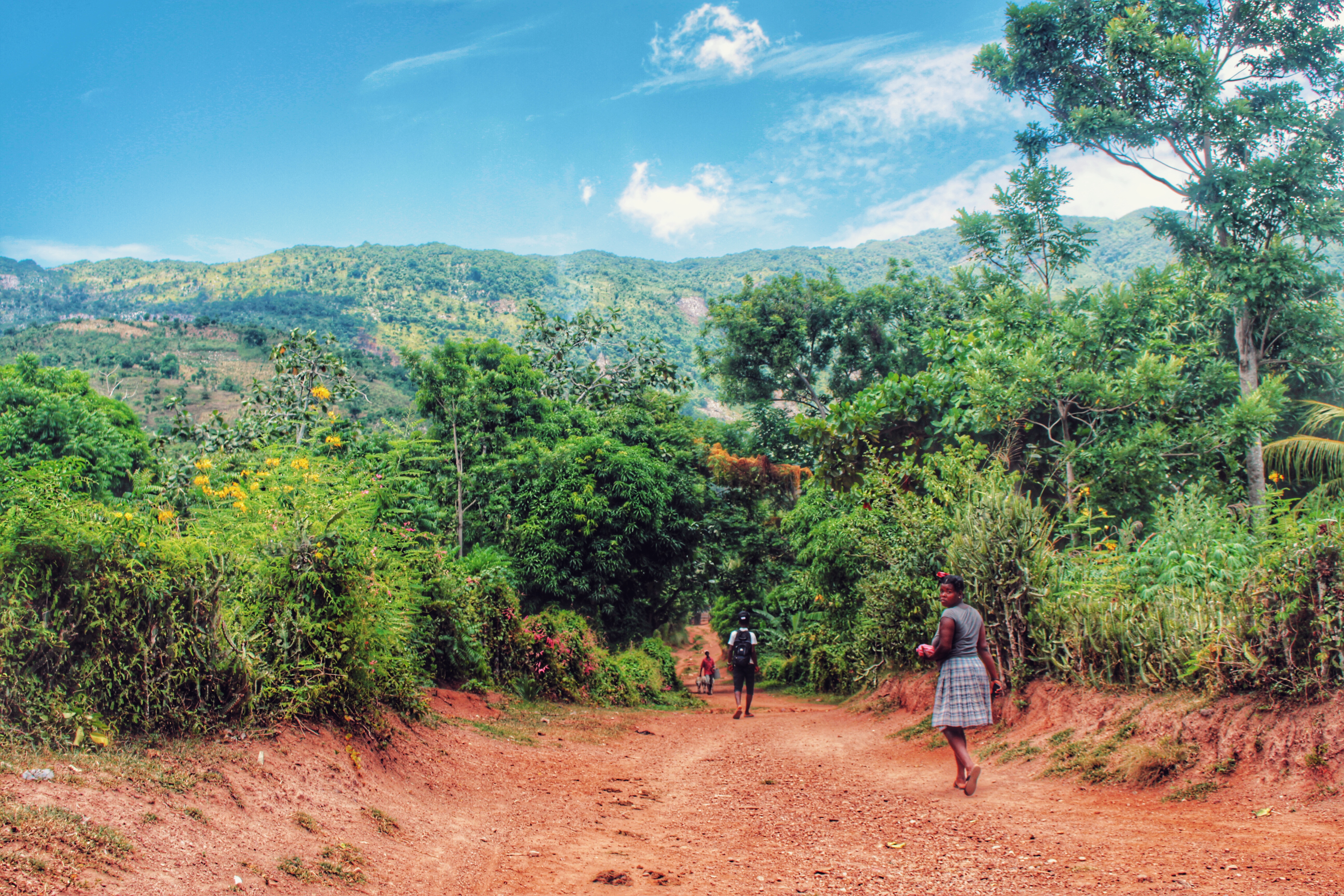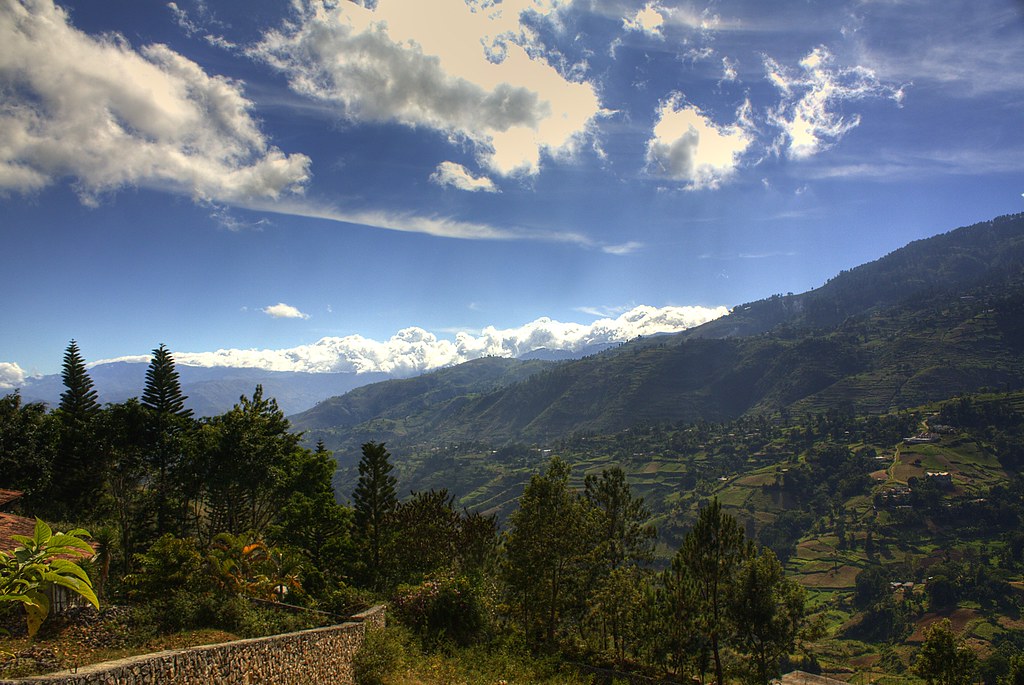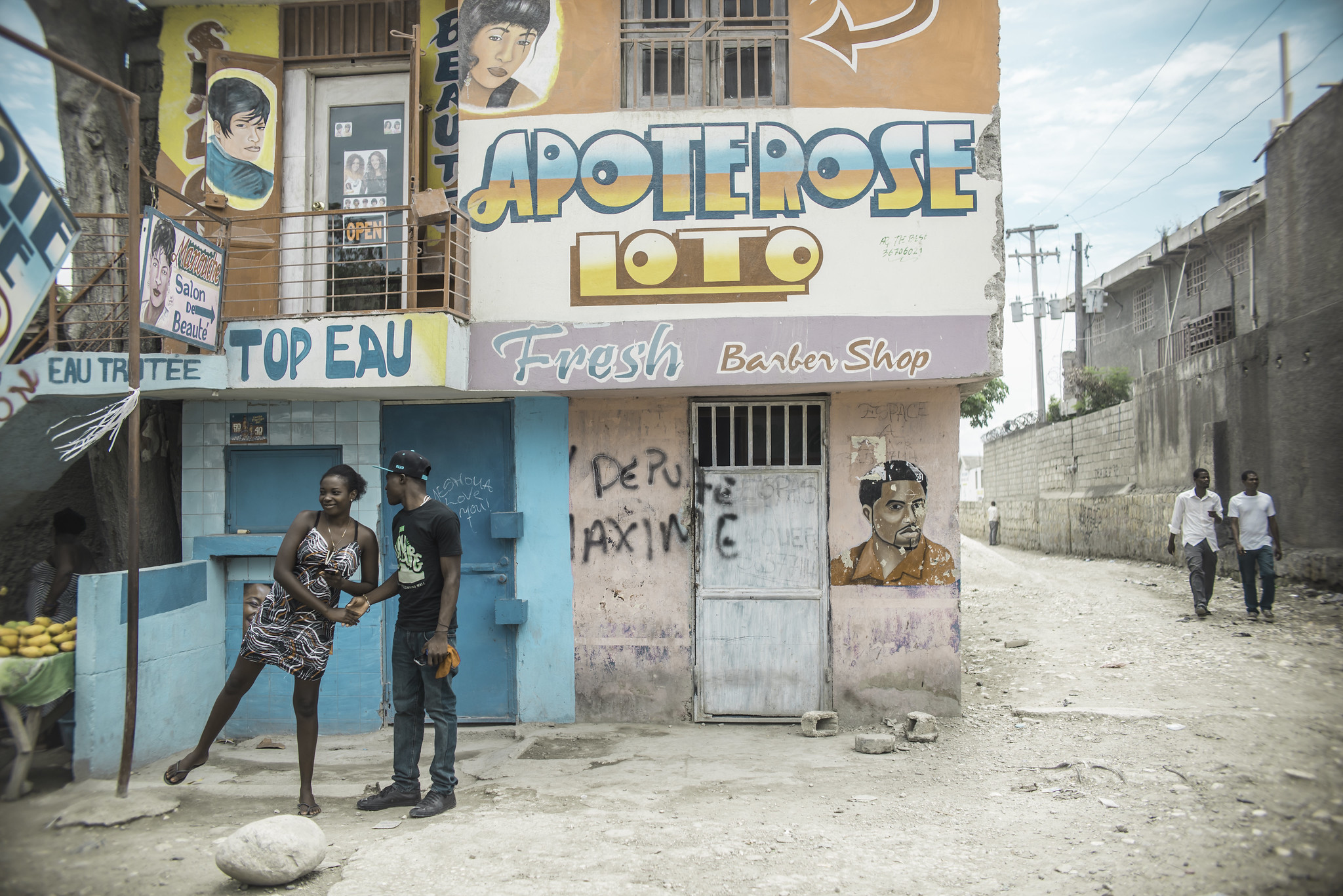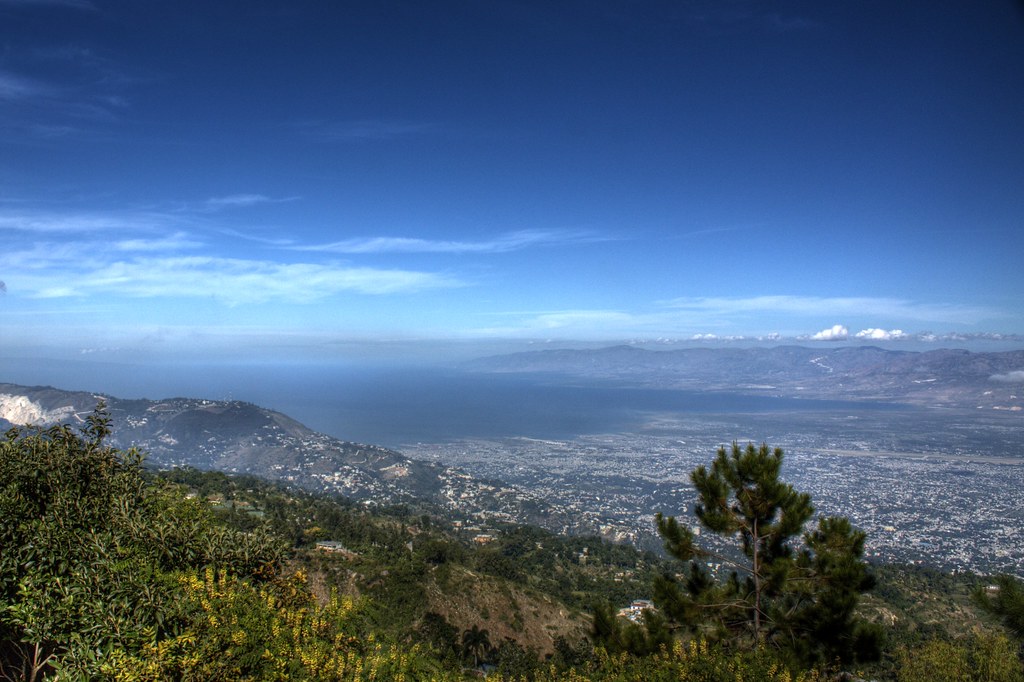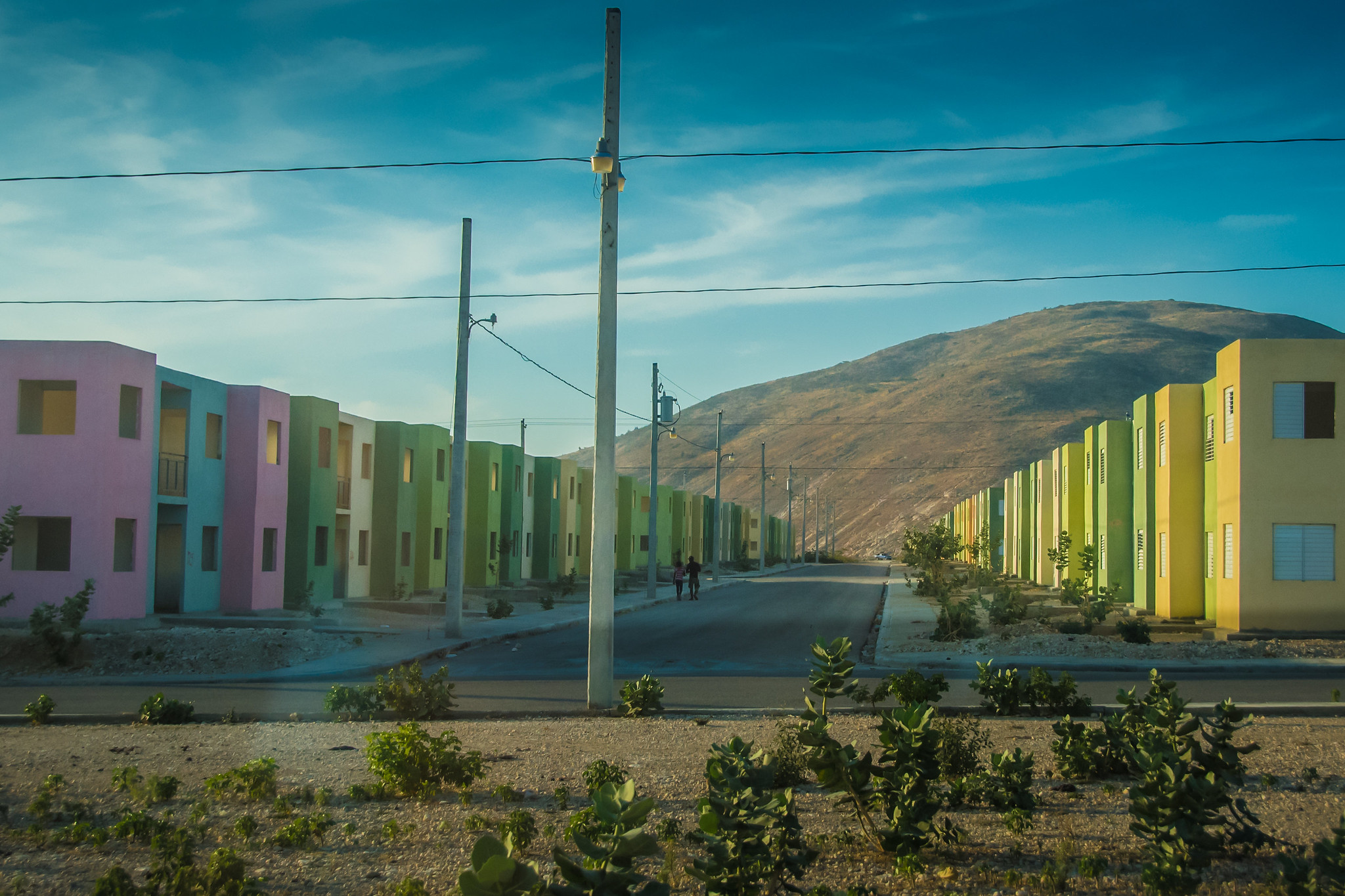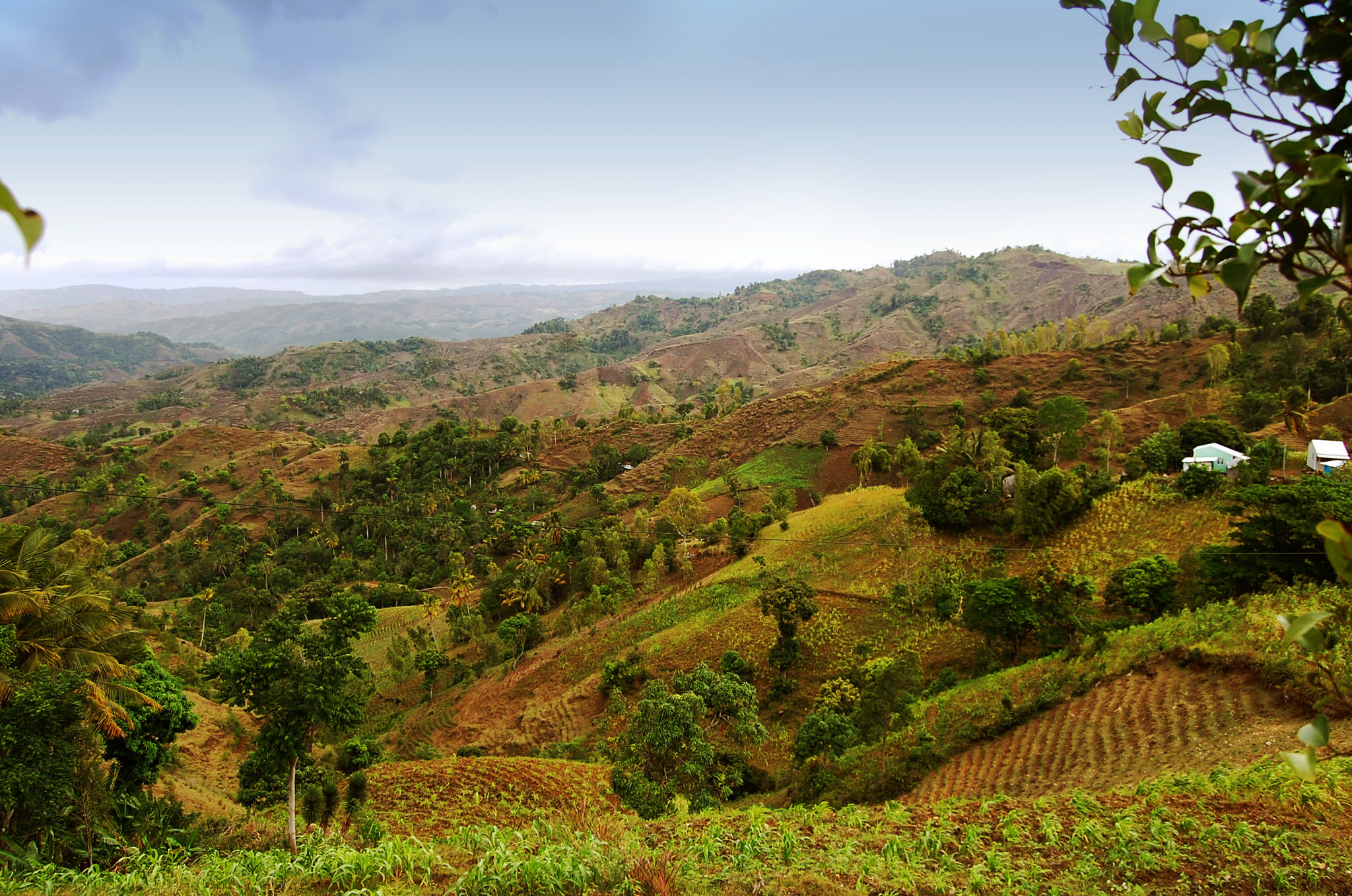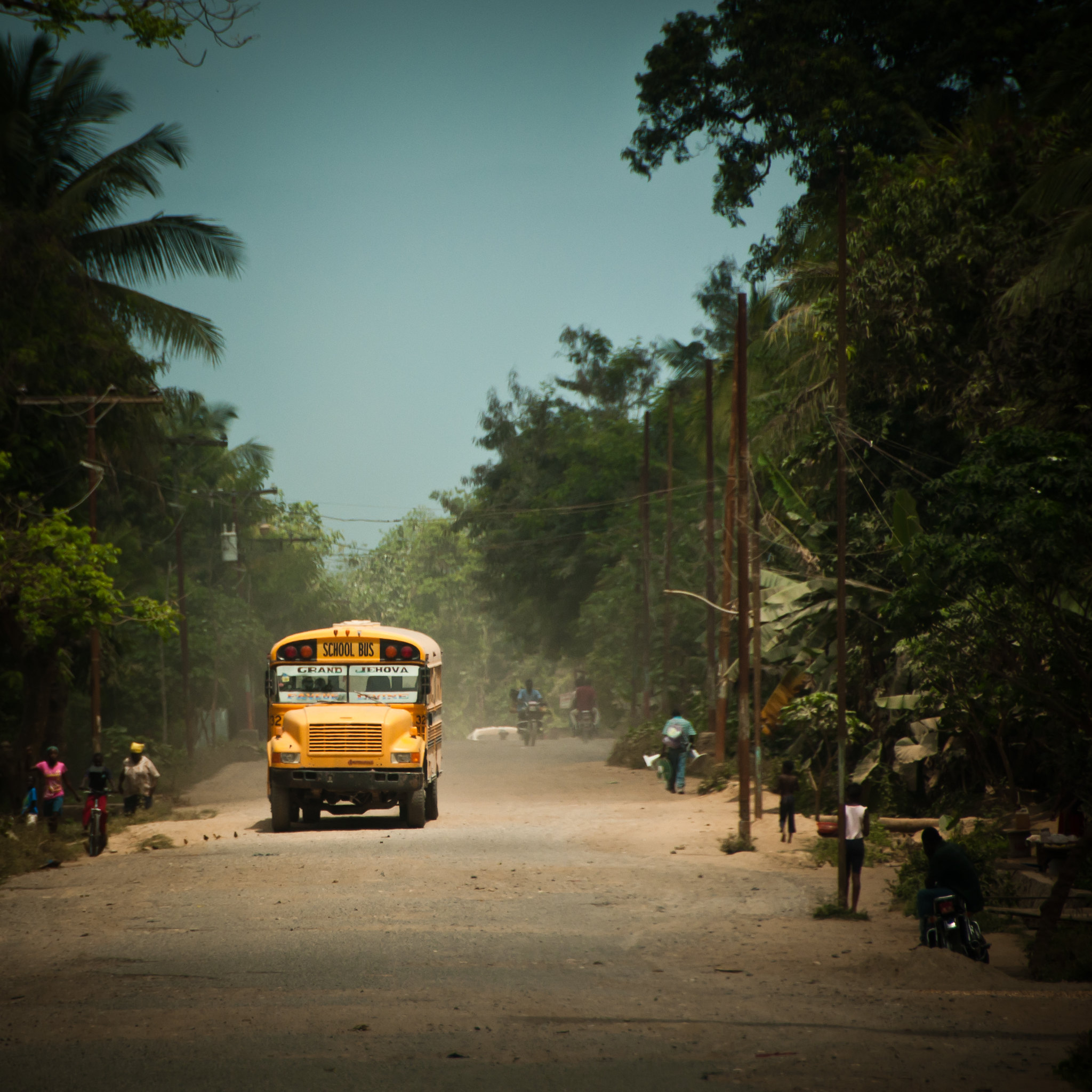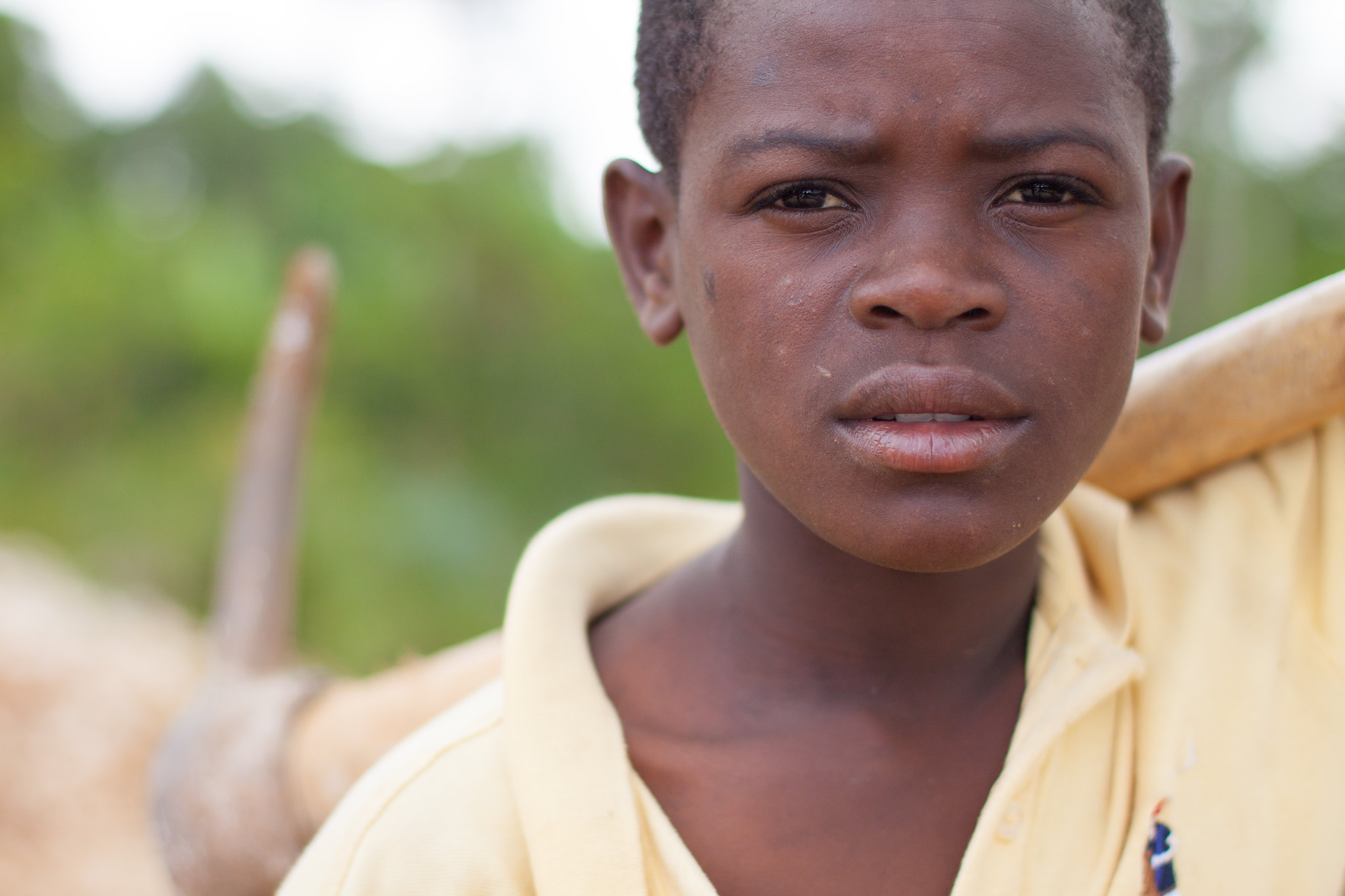Post by Dominicanese on Sept 23, 2017 13:06:29 GMT
Haiti.

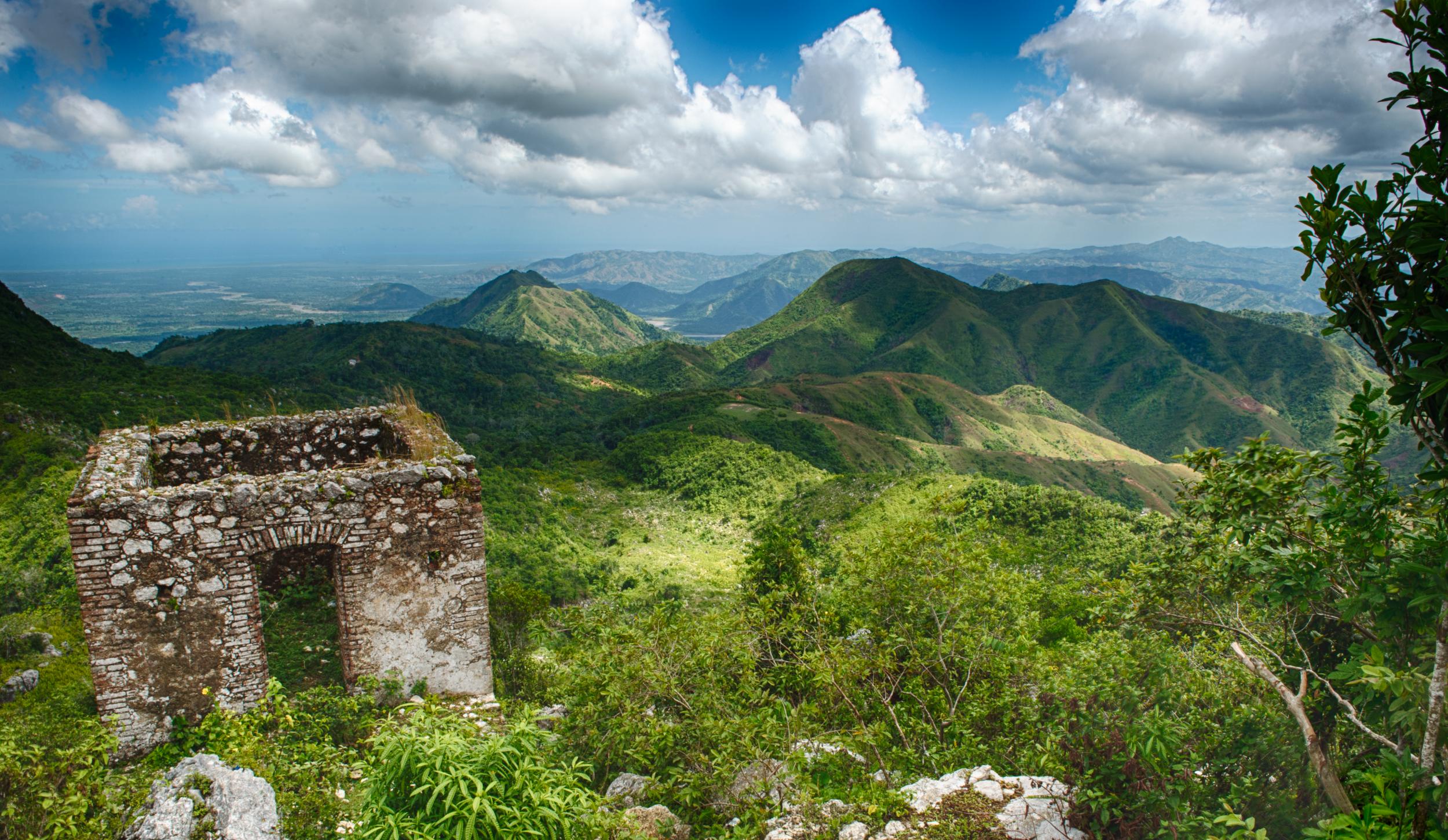

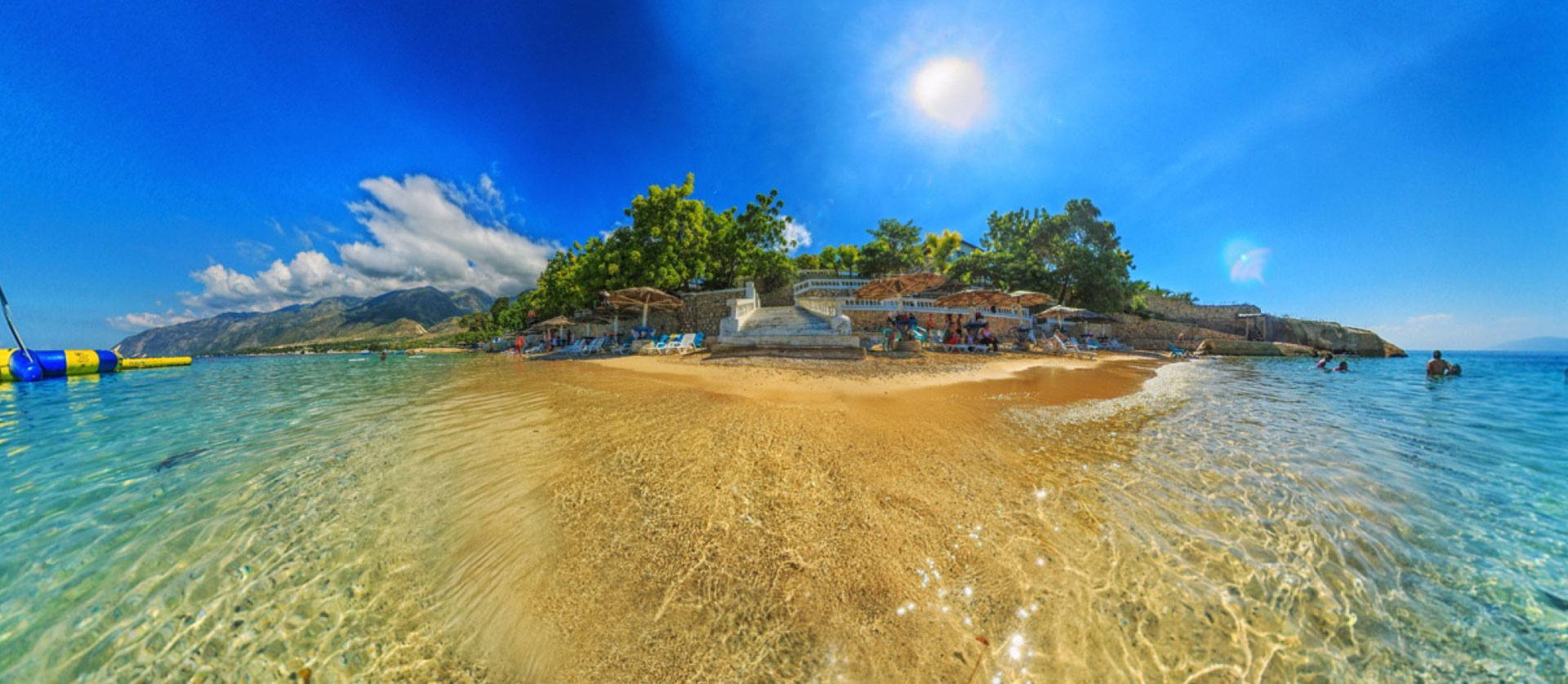

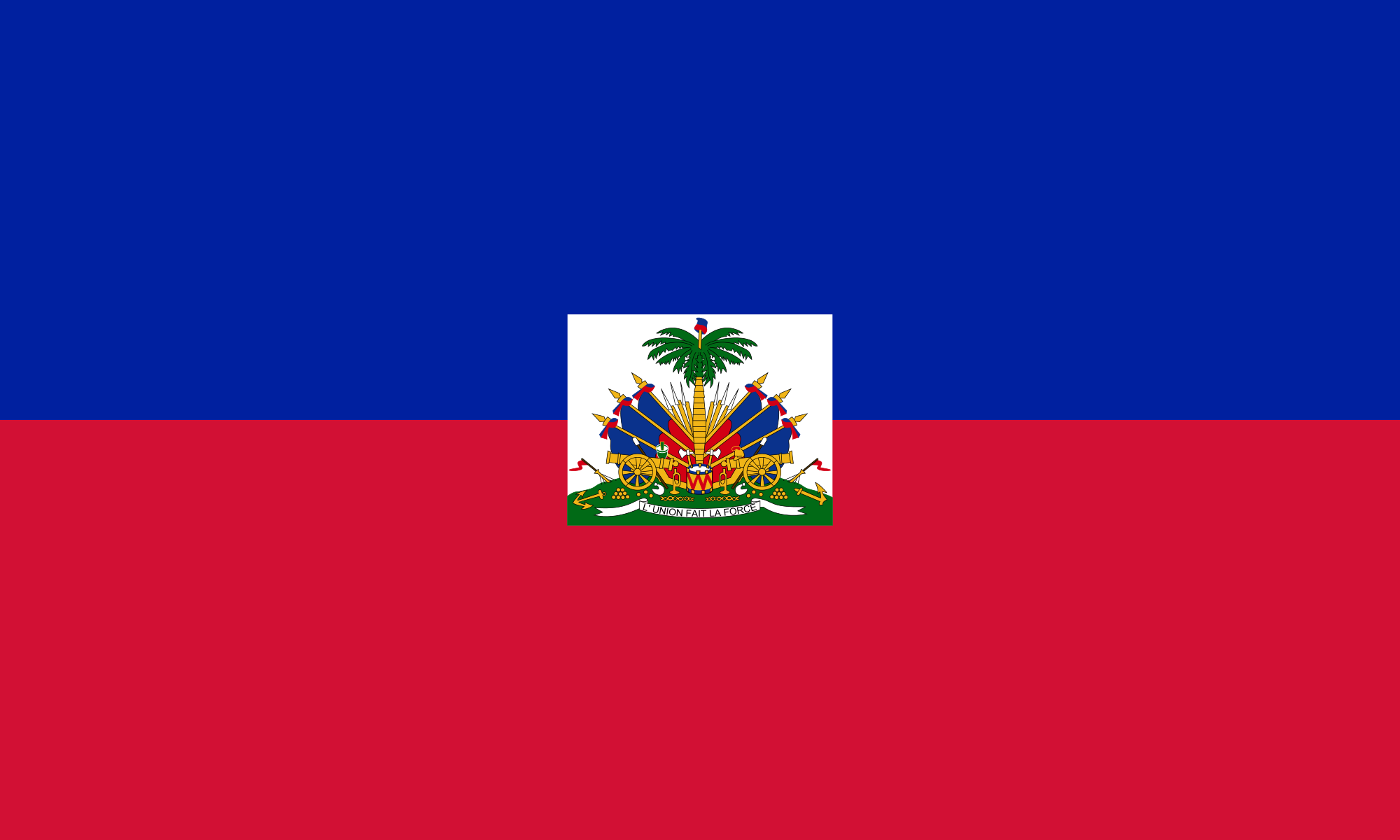



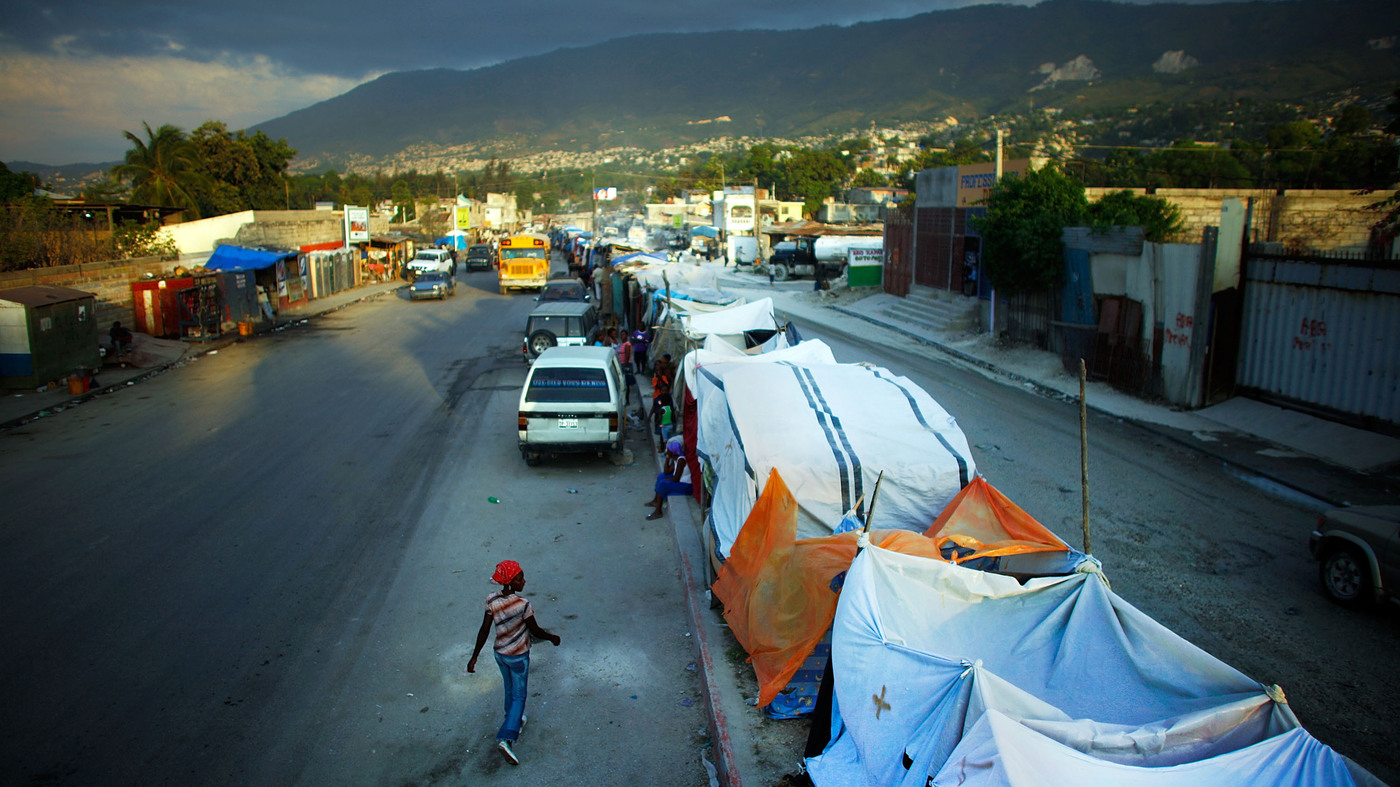

Culture:
The culture of Haiti is an eclectic mix of African and European elements due to the French colonization of Saint Domingue and its large and diverse enslaved African population, as is evidenced in the Haitian language, music, and religion. The culture also encompasses additional contributions from native Taino and Spanish imperialism. "Papa Doc" Duvalier’s brutal rule was noted for its use of Haitian folklore to terrorize the population, such as the Tonton Macoute.
Cuisine:
The French influences in Haiti are present in their cuisine, but more so it is representative of their location in the Caribbean. They do however have their own flavor as a result of the lack of Spanish influence on their island compared to others in the Caribbean. The cooking style used in Haiti is predominately Creole and includes heavy use of pepper in the majority of their dishes. A main staple in Haiti Is starch, and many of their dishes include potatoes, rice, corn, beans, and plantains.

There is also a strong presence of tropical fruits in their cuisine due to their ability to grow in the tropical climate. This includes pineapples, coconuts, mangoes, and other fruits that are used for many dishes and beverages. Food also has importance in religious and status-symbol type forms. Foods that are considered delicacies in Haiti include French inspired cheeses and meats and are a symbol of money and power. Typically these types of meals are only served in the richest part of Haiti, namely in the capital of Port-au-Prince. As Far as Religious meals go, the Catholics in Haiti typically enjoy more elaborate meals during Christmas Eve.

Haiti was one of many Caribbean islands inhabited by the Taíno natives, speakers of an Arawakan language called Taíno. The barbecue (or BBQ) originated in Haiti. The word "barbecue" derives from the word barabicu, found in the language of the Taíno people of Caribbean and the Timucua of Florida, and entered European languages in the form barbacoa. Specifically, the Oxford English Dictionary translates the word as a "framework of sticks set upon posts". Gonzalo Fernández De Oviedo y Valdés, a Spanish explorer, was the first to use the word "barbecoa" in print in Spain in 1526 in the Diccionario de la Lengua Española of the Real Academia Española. After Columbus landed in the Americas in 1492, the Spaniards had seemed to have found native Haitians roasting animal meat over a grill consisting of a wooden framework resting on sticks and a fire made underneath, that flames and smoke would rise and envelop the animal meat, giving it a certain flavor. Strangely enough, the same framework was used as a means of protection against the wild that may attack during middle of the night while at sleep. The barbecue not only survived in the Haitian cuisine, but was introduced to many different parts of the world and has numerous regional variations.

Christopher Columbus landed at Môle Saint-Nicolas on 5 December 1492, and claimed the island he named La Isla Espanola (later named Hispaniola) for Spain. The Spanish established sugar plantations and made the natives work as slaves, however the harsh conditions and infectious diseases brought over by the Spanish sailors nearly wiped out the indigenous population by 1520 as the natives lacked immunity to these new diseases, forcing the Spaniards to import slaves from Africa to work these plantations instead. The Africans introduced okra (also called gumbo; edible pods), ackee (red and yellow fruit), taro (an edible root), pigeon peas (seeds of an African shrub), and various spices to the diet. In 1659, the French had established themselves on the western portion of the islands of Hispaniola and Tortuga by the way of buccaneers. The Treaty of Ryswick of 1697, allowed the French to acquire the western portion of the island from the Spanish they had neglected. By the 1700s, the French had situated its control comfortably, successfully cultivating sugarcane, coffee, cotton, and cocoa from the African slave labor. When the Haitian Revolution ended and the people of Haiti won their independence in 1804 and established the world's first black republic, thousands of refugees from the revolution, both whites and free people of color (affranchis or gens de couleur libres), fled to New Orleans, often bringing African slaves with them, doubling the city's population. They also introduced such Haitian specialties as the red beans and rice and mirliton (or called chayote; a pear-shaped vegetable) to the Louisiana Creole cuisine.

Haitian cuisine is often lumped together with other regional islands as "Caribbean cuisine," however it maintains an independently unique flavor. It involves the extensive use of herbs, and the liberal use of peppers. A typical dish would probably be a plate of riz collé aux pois (diri kole ak pwa), which is rice with red kidney beans (pinto beans are often used as well) glazed with a marinade as a sauce and topped off with red snapper, tomatoes and onions. It is often called the Riz National, considered to be the national rice of Haiti. The dish can be accompanied by bouillon. Bouillon is a hearty soup consisting of various spices, potatoes, tomatoes, and meats such as goat or beef. Dishes vary by region.
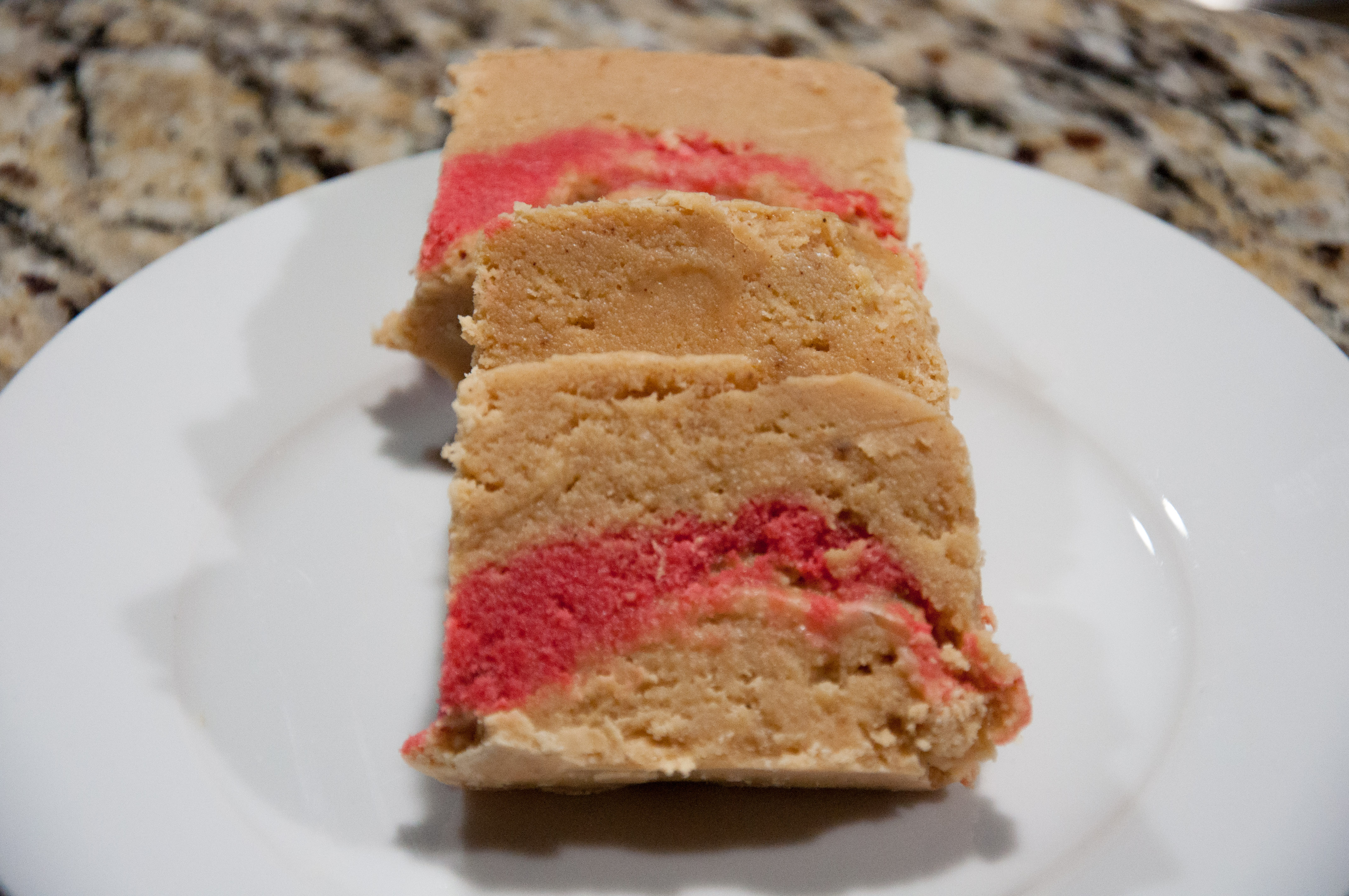
Rice is occasionally eaten with beans alone, but more often than not, some sort of meat completes the dish. Bean purée or sauce pois (sos pwa) is often poured on top of white rice. The traditional Haitian sauce pois is less thick than the Cuban's black bean soup. Black beans is usually the beans of choice, followed by red beans, white beans and even peas. Chicken is frequently eaten, the same goes for goat meat (cabrit) and beef (boeuf). Chicken is often boiled in a marinade consisting of lemon juice, sour orange, scotch bonnet pepper, garlic and other seasonings and subsequently fried until crispy.
Music:
The music of Haiti combines a wide range of influences drawn from the many people who have settled on this Caribbean island. It reflects French, African rhythms, Spanish elements and others who have inhabited the island of Hispaniola and minor native Taino influences. Styles of music unique to the nation of Haiti include music derived from Vodou ceremonial traditions, rara parading music, twoubadou ballads, mini-jazz rock bands, rasin movement, hip hop kreyòl, the wildly popular compas, and méringue as its basic rhythm. Haiti hadn't had a recorded music until 1937 when Jazz Guignard was recorded non-commercially. One of the most popular Haitian artists is Wyclef Jean. His music is somewhat hip-hop mixed with world music. Haitian music is influenced mostly by European colonial ties and African migration (through slavery). In the case of European colonization, musical influence has derived primarily from the French.

One of Haiti's musical traditions is known to outsiders simply as compas. But in the former non-standardized Haitian Creole, Haitians identify it variously as compa, conpa, and konpa-dirék. Regardless of its various spellings, compas refers to a complex, ever-changing music genre that fuses African rhythms, European ballroom dancing, and Haitian bourgeois aesthetics. The word may have derived from the Spanish compás, which relates to the musical rhythm of the "beat" or "pulse." One of the most distinctive features of Haitian compas music is the steady, pulsing drum beat, which makes it easy to dance to.
Ethnic Racial Composition:
* 94.2% Black
* 5.4% Mulatto
* 0.4% White
People:
Most modern Haitians are descendants of former black African slaves, including Mulattoes who are mixed-race. The remainder are of European descent and Arab Haitians, the descendants of settlers (colonial remnants and contemporary immigration during WWI and WWII). Haitians of East Asian descent or East Indian origin number approximately 400+.

The gene pool of Haiti is about 95.5% Sub-Saharan African, 4.3% European, with the rest showing some traces of East Asian genes; according to a 2010 autosomal genealogical DNA testing.
Languages:
French and Haitian Creole are the two official languages of Haiti. While French is the formal language; Haitian Creole is the most widely spoken dialect in Haiti. Haitian Creole has it's roots in Normandi French of Northern France with strong influences from West-Central African languages. There is also some minor influences and words from Spanish, Portuguese, and Indigenous languages.
Religion:
Haiti, for much of its history and including present-day has been prevailingly a Christian country, primarily Roman Catholicism, although in some instances it is profoundly modified and influenced through syncretism. A common syncretic religion is Vodou, which combined the West African religions of the African slaves with Catholicism and some Native American strands; it shows similarities to Cuban Santería.

The largest Christian denomination in the country is Roman Catholicism, which is estimated to be about 80 percent of the population according to the 2015 CIA World Factbook. The historical background is very much due to the French influence brought about through the newly conquered territories.
Economy:
Haiti's purchasing power parity GDP fell 8% in 2010 (from US$12.15 billion to US$11.18 billion) and the GDP per capita remained unchanged at PPP US$1,200.[2] Despite having a viable tourist industry, Haiti is one of the world's poorest countries and the poorest in the Americas region, with poverty, corruption, poor infrastructure, lack of health care and lack of education cited as the main sources. The economy receded due to the 2010 earthquake and subsequent outbreak of Cholera. Haiti ranked 145 of 182 countries in the 2010 United Nations Human Development Index, with 57.3% of the population being deprived in at least three of the HDI's poverty measures. Over 90% of Haitians live in poverty.
Sports:
Football (Soccer) is the most popular sport in Haiti with hundreds of small football clubs competing at the local level. Basketball is growing in popularity.[284] Stade Sylvio Cator is the multi-purpose stadium in Port-au-Prince, where it is currently used mostly for association football matches that fits a capacity of 10,000 people. In 1974, the Haiti national football team were only the second Caribbean team to make the World Cup (after Cuba's entry in 1938). They lost in the opening qualifying stages against three of the pre-tournament favorites; Italy, Poland, and Argentina. The national team won the 2007 Caribbean Nations Cup.
Haitian videos










Culture:
The culture of Haiti is an eclectic mix of African and European elements due to the French colonization of Saint Domingue and its large and diverse enslaved African population, as is evidenced in the Haitian language, music, and religion. The culture also encompasses additional contributions from native Taino and Spanish imperialism. "Papa Doc" Duvalier’s brutal rule was noted for its use of Haitian folklore to terrorize the population, such as the Tonton Macoute.
Cuisine:
The French influences in Haiti are present in their cuisine, but more so it is representative of their location in the Caribbean. They do however have their own flavor as a result of the lack of Spanish influence on their island compared to others in the Caribbean. The cooking style used in Haiti is predominately Creole and includes heavy use of pepper in the majority of their dishes. A main staple in Haiti Is starch, and many of their dishes include potatoes, rice, corn, beans, and plantains.

There is also a strong presence of tropical fruits in their cuisine due to their ability to grow in the tropical climate. This includes pineapples, coconuts, mangoes, and other fruits that are used for many dishes and beverages. Food also has importance in religious and status-symbol type forms. Foods that are considered delicacies in Haiti include French inspired cheeses and meats and are a symbol of money and power. Typically these types of meals are only served in the richest part of Haiti, namely in the capital of Port-au-Prince. As Far as Religious meals go, the Catholics in Haiti typically enjoy more elaborate meals during Christmas Eve.

Haiti was one of many Caribbean islands inhabited by the Taíno natives, speakers of an Arawakan language called Taíno. The barbecue (or BBQ) originated in Haiti. The word "barbecue" derives from the word barabicu, found in the language of the Taíno people of Caribbean and the Timucua of Florida, and entered European languages in the form barbacoa. Specifically, the Oxford English Dictionary translates the word as a "framework of sticks set upon posts". Gonzalo Fernández De Oviedo y Valdés, a Spanish explorer, was the first to use the word "barbecoa" in print in Spain in 1526 in the Diccionario de la Lengua Española of the Real Academia Española. After Columbus landed in the Americas in 1492, the Spaniards had seemed to have found native Haitians roasting animal meat over a grill consisting of a wooden framework resting on sticks and a fire made underneath, that flames and smoke would rise and envelop the animal meat, giving it a certain flavor. Strangely enough, the same framework was used as a means of protection against the wild that may attack during middle of the night while at sleep. The barbecue not only survived in the Haitian cuisine, but was introduced to many different parts of the world and has numerous regional variations.

Christopher Columbus landed at Môle Saint-Nicolas on 5 December 1492, and claimed the island he named La Isla Espanola (later named Hispaniola) for Spain. The Spanish established sugar plantations and made the natives work as slaves, however the harsh conditions and infectious diseases brought over by the Spanish sailors nearly wiped out the indigenous population by 1520 as the natives lacked immunity to these new diseases, forcing the Spaniards to import slaves from Africa to work these plantations instead. The Africans introduced okra (also called gumbo; edible pods), ackee (red and yellow fruit), taro (an edible root), pigeon peas (seeds of an African shrub), and various spices to the diet. In 1659, the French had established themselves on the western portion of the islands of Hispaniola and Tortuga by the way of buccaneers. The Treaty of Ryswick of 1697, allowed the French to acquire the western portion of the island from the Spanish they had neglected. By the 1700s, the French had situated its control comfortably, successfully cultivating sugarcane, coffee, cotton, and cocoa from the African slave labor. When the Haitian Revolution ended and the people of Haiti won their independence in 1804 and established the world's first black republic, thousands of refugees from the revolution, both whites and free people of color (affranchis or gens de couleur libres), fled to New Orleans, often bringing African slaves with them, doubling the city's population. They also introduced such Haitian specialties as the red beans and rice and mirliton (or called chayote; a pear-shaped vegetable) to the Louisiana Creole cuisine.

Haitian cuisine is often lumped together with other regional islands as "Caribbean cuisine," however it maintains an independently unique flavor. It involves the extensive use of herbs, and the liberal use of peppers. A typical dish would probably be a plate of riz collé aux pois (diri kole ak pwa), which is rice with red kidney beans (pinto beans are often used as well) glazed with a marinade as a sauce and topped off with red snapper, tomatoes and onions. It is often called the Riz National, considered to be the national rice of Haiti. The dish can be accompanied by bouillon. Bouillon is a hearty soup consisting of various spices, potatoes, tomatoes, and meats such as goat or beef. Dishes vary by region.

Rice is occasionally eaten with beans alone, but more often than not, some sort of meat completes the dish. Bean purée or sauce pois (sos pwa) is often poured on top of white rice. The traditional Haitian sauce pois is less thick than the Cuban's black bean soup. Black beans is usually the beans of choice, followed by red beans, white beans and even peas. Chicken is frequently eaten, the same goes for goat meat (cabrit) and beef (boeuf). Chicken is often boiled in a marinade consisting of lemon juice, sour orange, scotch bonnet pepper, garlic and other seasonings and subsequently fried until crispy.
Music:
The music of Haiti combines a wide range of influences drawn from the many people who have settled on this Caribbean island. It reflects French, African rhythms, Spanish elements and others who have inhabited the island of Hispaniola and minor native Taino influences. Styles of music unique to the nation of Haiti include music derived from Vodou ceremonial traditions, rara parading music, twoubadou ballads, mini-jazz rock bands, rasin movement, hip hop kreyòl, the wildly popular compas, and méringue as its basic rhythm. Haiti hadn't had a recorded music until 1937 when Jazz Guignard was recorded non-commercially. One of the most popular Haitian artists is Wyclef Jean. His music is somewhat hip-hop mixed with world music. Haitian music is influenced mostly by European colonial ties and African migration (through slavery). In the case of European colonization, musical influence has derived primarily from the French.

One of Haiti's musical traditions is known to outsiders simply as compas. But in the former non-standardized Haitian Creole, Haitians identify it variously as compa, conpa, and konpa-dirék. Regardless of its various spellings, compas refers to a complex, ever-changing music genre that fuses African rhythms, European ballroom dancing, and Haitian bourgeois aesthetics. The word may have derived from the Spanish compás, which relates to the musical rhythm of the "beat" or "pulse." One of the most distinctive features of Haitian compas music is the steady, pulsing drum beat, which makes it easy to dance to.
Ethnic Racial Composition:
* 94.2% Black
* 5.4% Mulatto
* 0.4% White
People:
Most modern Haitians are descendants of former black African slaves, including Mulattoes who are mixed-race. The remainder are of European descent and Arab Haitians, the descendants of settlers (colonial remnants and contemporary immigration during WWI and WWII). Haitians of East Asian descent or East Indian origin number approximately 400+.

The gene pool of Haiti is about 95.5% Sub-Saharan African, 4.3% European, with the rest showing some traces of East Asian genes; according to a 2010 autosomal genealogical DNA testing.
Languages:
French and Haitian Creole are the two official languages of Haiti. While French is the formal language; Haitian Creole is the most widely spoken dialect in Haiti. Haitian Creole has it's roots in Normandi French of Northern France with strong influences from West-Central African languages. There is also some minor influences and words from Spanish, Portuguese, and Indigenous languages.
Religion:
Haiti, for much of its history and including present-day has been prevailingly a Christian country, primarily Roman Catholicism, although in some instances it is profoundly modified and influenced through syncretism. A common syncretic religion is Vodou, which combined the West African religions of the African slaves with Catholicism and some Native American strands; it shows similarities to Cuban Santería.

The largest Christian denomination in the country is Roman Catholicism, which is estimated to be about 80 percent of the population according to the 2015 CIA World Factbook. The historical background is very much due to the French influence brought about through the newly conquered territories.
Economy:
Haiti's purchasing power parity GDP fell 8% in 2010 (from US$12.15 billion to US$11.18 billion) and the GDP per capita remained unchanged at PPP US$1,200.[2] Despite having a viable tourist industry, Haiti is one of the world's poorest countries and the poorest in the Americas region, with poverty, corruption, poor infrastructure, lack of health care and lack of education cited as the main sources. The economy receded due to the 2010 earthquake and subsequent outbreak of Cholera. Haiti ranked 145 of 182 countries in the 2010 United Nations Human Development Index, with 57.3% of the population being deprived in at least three of the HDI's poverty measures. Over 90% of Haitians live in poverty.
Sports:
Football (Soccer) is the most popular sport in Haiti with hundreds of small football clubs competing at the local level. Basketball is growing in popularity.[284] Stade Sylvio Cator is the multi-purpose stadium in Port-au-Prince, where it is currently used mostly for association football matches that fits a capacity of 10,000 people. In 1974, the Haiti national football team were only the second Caribbean team to make the World Cup (after Cuba's entry in 1938). They lost in the opening qualifying stages against three of the pre-tournament favorites; Italy, Poland, and Argentina. The national team won the 2007 Caribbean Nations Cup.
Haitian videos










